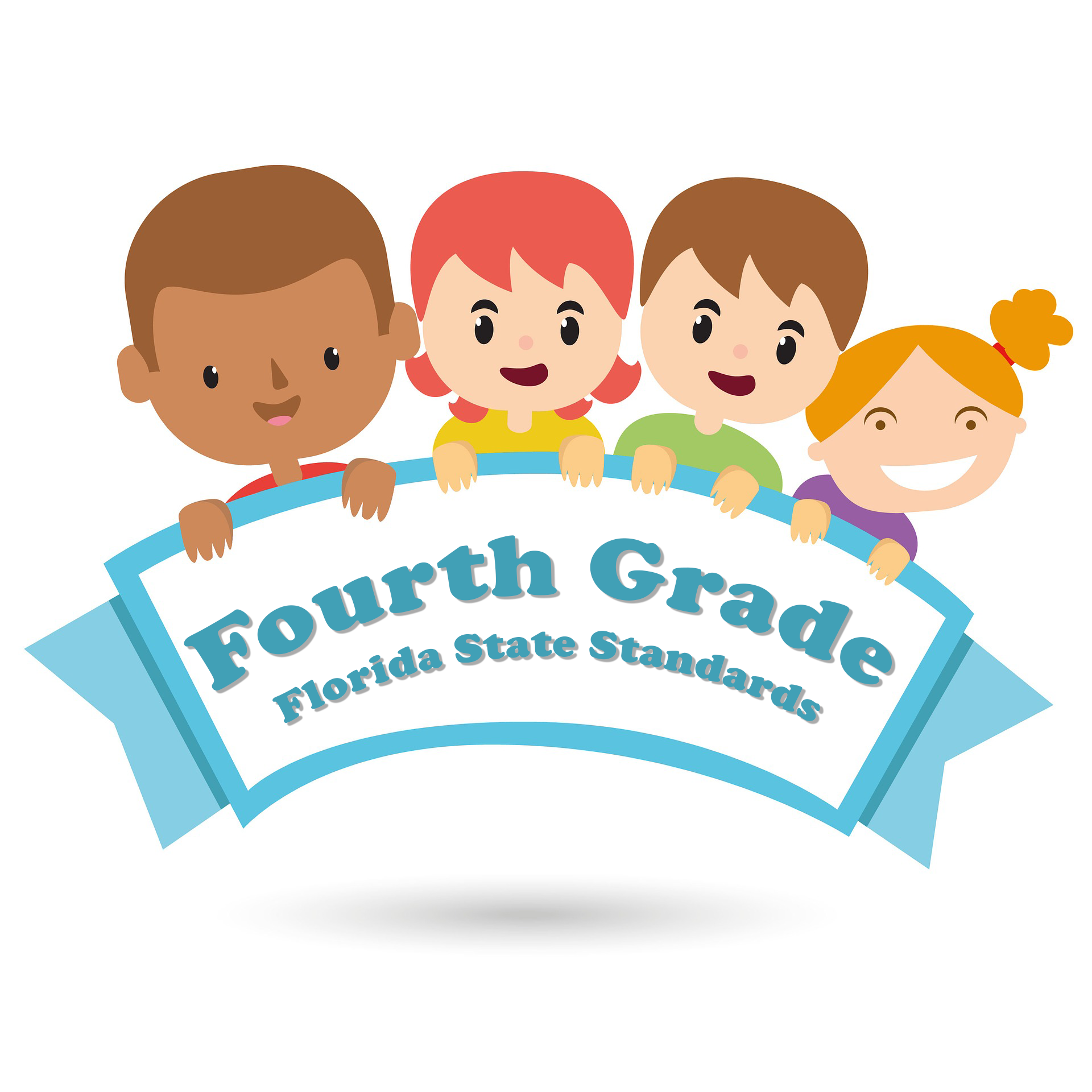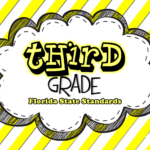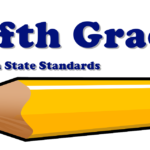We know that for many people, one of the first concerns they have with homeschooling is “falling behind.” While seasoned homeschoolers will tell you, there’s no such thing (all kids learn at their own pace, whether at home or school, and homeschooling gives you the freedom to move at that pace); sometimes it’s comforting to check-in with what’s required in the public schools. Reading through the state standards can be overwhelming if you aren’t a teacher, so we’ve condensed them into easy to read and understand plain language. You can access the original state standards on CPALMS.org
Use can use these standards to help you decide what level of curriculum to use, to keep track of gained skills during the year, or to assess progress throughout the year.
Download the Checklist for Fourth Grade Florida State Standards.
ENGLISH LANGUAGE ARTS (ELA), FOURTH GRADE
WRITING
- Demonstrate legible cursive skills
SPELLING
- Correct usage of frequently confused words (to, too, two; there, their, they’re)
- Use correct capitalization
- Spell grade-appropriate words and consult references, as needed
GRAMMAR WHEN WRITING OR SPEAKING
- Order adjectives using conventional patterns (small, red bag vs. red, small bag)
- Use modal auxiliaries (can, may, must) to convey various conditions
- Use of progressive verb tenses (I was, I am, I will be); relative pronouns (who, whose, whom, which, that); and prepositional phrases
- Differentiation between contexts for formal and informal speech
SENTENCE STRUCTURE
- Produce complete sentences, recognizing and correcting fragments and run-ons
- Use of commas and quotation marks for quotes within text, commas in coordinating conjunctions, and punctuation for effect
VOCABULARY
- Continued mastery of context clues, affixes, roots, and reference materials to discern meanings
- Explain simple similes and metaphors in context
- Recognize common idioms, adages, and proverbs
- Understand relationships between antonyms and synonyms
READING
- Decode multisyllable words in and out of context
- Read on-level text with purpose and understanding, orally and silently, with appropriate accuracy, rate, and expression, self-correcting words as needed
- Read on-level text with appropriate comprehension, rate, and expression
READING COMPREHENSION
- Answer questions to clarify and demonstrate understanding of grade-level texts, referring explicitly to the text
- Determine meaning and be able to use general academic and domain-specific words and phrases in grade-level texts
- Explain events, concepts, etc. from a text, including what happened and why, as well as chronology, comparison, cause/effect, problem/solution, based on specific details
- Interpret information presented visually, orally, quantitatively (charts, etc), and explain how it contributes to understanding of a text
- Integrate information from two texts on the same topic to address the subject knowledgeably
- Read and comprehend grade-level texts, including history/social studies, science, and technical texts, as well as stories, drama, and poetry, with appropriate grade-level comprehension
- Draw inferences and summarize texts, identifying details to provide support
- Describe structural differences between poems, drama, and prose
- Recognize different points of view between texts, including first and third person narrations
- Make connections between visual and text versions of the same story
- Compare and contrast themes from texts of similar topics (such as good vs. evil), noticing patterns, myths, and cultural differences
- Ability to have grade-appropriate discussions about texts, including preparation, drawing conclusions, asking questions and follow ups, and expressing understanding
COMPOSITION
- Clearly write opinion pieces, including introductions, appropriate organizational structure of supporting evidence, and concluding statement
- Continued growth in writing informative/explanatory texts to convey ideas, including an introduction; grouping related information together; illustrations or visual aids; development of idea using facts, definitions, and details; linking words (also, another, and, more, but) to connect ideas within categories; domain-specific vocabulary, and appropriate conclusion. Conduct short research projects that build on knowledge.
- Continued growth in narrative writing of real or imagined experiences using appropriate technique, descriptions, and clear event sequences, including scene setting and character introduction; use of dialogue, feelings, and character responses; temporal words or phrases to signal order of events; and closure
- With guidance, produce writing in which development and organization are appropriate to task and purpose, including varying timeframes (time for research and reflection vs. a quick, one-sitting writing project)
- Produce grade-level appropriate clear and coherent writing, in which the development and organization are appropriate to task, purpose, and audience
- Continue growth on editing, accepting feedback from adults and peers
- Keyboard skills sufficient to type a minimum of one page in a single sitting
- Ability to pull from various research sources and organize information, including providing a list of sources
Download the Checklist for Fourth Grade Florida State Standards.
MATH, FOURTH GRADE
GEOMETRY
- Draw and identify points, lines, segments, rays, angles, and perpendicular and parallel lines in 2-dimensional figures
- Classify two-dimensional figures based on lines, and angles, including recognizing right triangles
- Recognize and draw lines of symmetry in two-dimensional figures
- Calculate area and perimeter for rectangles in word problems or real-world scenarios
- Recognize angles as geometric shapes formed by two rays and concepts of measuring angles (an angle is measured with reference to a circle with its center at the end point and considering the arc between the points where they intersect)
- Measure angles using a protractor with whole-number degrees, recognize angles as additive
FRACTIONS AND DECIMALS
- Use the four operations to solve word problems involving simple fractions and decimals
- Make a line plot to display fractions of a unit (1/2, 1/4, 1/8) and solve addition and subtraction equations
- Compare decimals to hundredths and fractions using <, >, and =, recognizing comparisons are only valid when referring to the same whole
- Compare fractions with different denominators and numerators by creating common denominators. Recognize comparisons are only valid when the fractions refer to the same whole
- Decompose fractions into a sum with the same denominator (3/8 = 1/8 + 1/8 + 1/8)
- Convert fractions to decimals with denominators of 10 or 100 (0.62 = 62/100)
MEASUREMENT
- Recognize units of measurement including: km, m, cm, kg, g, lb, oz, l, ml, hr, min, sec
- Within a single system of measurement, recognize conversions using multiplication and ability to create a 2-column chart expressing two equivalencies (foot-to-inch)
- Use the four operations to solve word problems involving distances, time, and money.
PLACE VALUE/NUMBER FLUENCY
- Compare multi-digit numbers using <, >, and =
- Use place value understanding to round multi-digit whole numbers
- Generate number or shape patterns that follow rules, such as the rule “add 3” will result in alternating even and odd numbers. Explain informally why this is so.
EQUATIONS
- Fluently add and subtract multi-digit whole numbers
- Multiply or divide a whole number up to four digits by a one-digit number and multiply two two-digit numbers
- Solve equations and word problems involving multiplication of a fraction by a whole number
- Addition and subtraction of fractions with a common denominator, including creating common denominators
- Solve multi-step word problems with whole numbers and whole number answers using the four operations, including representation of the unknown variable using a letter
- Self-correct or assess the answers found when solving equations by using mental computation or estimation strategies, such as rounding
- Determine whether an equation is true or false and find the unknown number in an equation by using comparative relational thinking (without adding 60 + 24, determine whether 60 + 24 =- 57 + 27)
- Find all factor pairs for a whole number in the range of 1-100 and recognize that a whole number is a multiple of each of its factors
- Determine whether a given whole number from 1-100 is prime or composite
Download the Checklist for Fourth Grade Florida State Standards.



